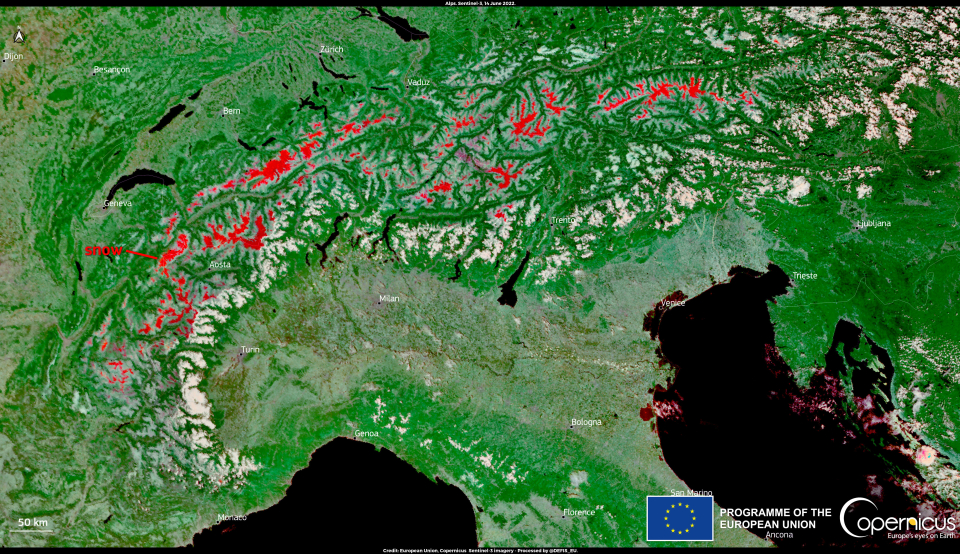Publié le 17 juin 2022
The effects of the severe drought that has been gripping Northern Italy for months are becoming even more evident with the warmer temperatures and the approach of summer. In fact, according to the Centre d’Etudes Spatiales de la Biosphère (CESBIO – Centre for Space Studies of the Biosphere), after a winter characterised by a lack of rain, the 2022 snow cover area reached its minimum earlier than any other year since 2001.

The residual snow cover, shown in red to distinguish it from clouds, is visible in this image, acquired by one of the Copernicus Sentinel-3 satellites on 14 June 2022.
Click here to view the image at full resolution.
The Snow and Ice Monitoring product provided by the Copernicus Land Monitoring Service (CLMS) offers high-resolution near real-time data used to monitor snow cover area, snow state conditions, persistent snow area and ice cover.